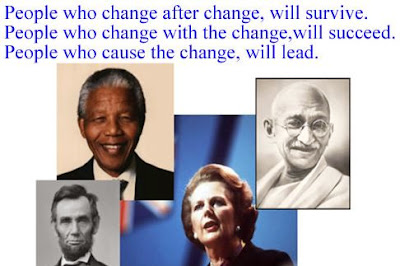Five Questions To A Solution
As we advance in our
organizations to leadership roles, we are approached to find solutions to a
variety of situations. I would like to share a protocol of five
questions which I have adapted from my work with clients, as I help to
transform their businesses. This is a generic and simple method which can
be applied to clarify a situation and support the determination of appropriate
solutions.
1.
What are the
Expectations?
This should precede any
report or description, in order to help set the context for everyone
involved. It also should help to reveal whether the report or update is
compatible with the standards of performance. For example, if an ASQ Section provides a report of accounts, there should be expectations of a precise dollar
amount, a period (last month, last quarter), and a way to validate an reconcile
the expenses claimed with actual items received. If the report is
associated with a defined protocol (e.g. ASQ PAR > Performance Awards and Recognition), then
some of those expectations have already been explicitly and objectively
defined.
Without clear
expectations, then a report or update can take on varying forms and
content. With expectations, the report has references against which to
demonstrate success or challenges.
2.
What Issues have
been identified for resolution?
This summarizes what
obstacles or obstructions are presently delaying or preventing the achievement
or fulfillment of the intended actions. Once raised and escalated, issues
should be assigned or escalated so that they can be resolved. By having a
sense of the outstanding or open issues, a leader can prioritize what has to be
fixed or corrected first, based on the impact that each issue has to overall
success.
3.
What Risks show
potential for a future problem?
Along with issues which
have already occurred, risks can be identified predicting problems in the
future. This could be something like identifying a leaky roof on a sunny
day, which while not damaging the building in the summer, could be devastating
once rain and snow appear. Rather than taking a pessimistic or negative
view, risks should be elicited as a way to help improve or correct conditions
or situations early before significant damage is done. If the risk is not
able to be mitigated and removed, then contingency plans should be made (i.e.
tarp over the leaky roof, barrels on a scaffold to catch water that penetrates
the leaky roof).
4.
What Decisions
have resulted?
There should be more to a
business meeting than eating lunch, drinking coffee, and determining the time
and location of the next meeting. If the right people are in attendance,
then decisions are made. These decisions should be recorded and kept on a
register until they are fulfilled or implemented. The decisions can be
positive or corrective. The health and vitality of the organization can
be measured by the connection between decisions made and decisions successfully
implemented.
5.
What are the
Action items?
A recommended practice is
to highlight the action items, their owners (people accountable and responsible
for completing the actions), and the expected completion dates (linking back to
expectations). The external dependencies should be considered with each
action.
So with these five items
(Expectations, Issues, Risks, Decisions, Actions), member-leaders and participants can more
objectively assess situations and progress toward solutions and fulfillment of
good intentions. If these items are captured and summarized, this
information can be reviewed. Strategic decisions can be made based on
knowing and addressing these items. Alternatively if there is no movement
on these initiatives (i.e. Particular action goes for years without being
completed), then it can be escalated or reassigned.
If member-leaders are receptive to
this approach, then the interaction across committees, sections, regions, divisions, interest groups, and similar entities can be synthesized into a consistently
constructive dialogue.



